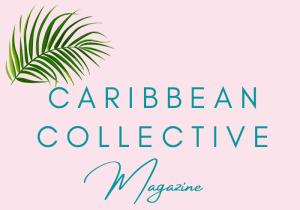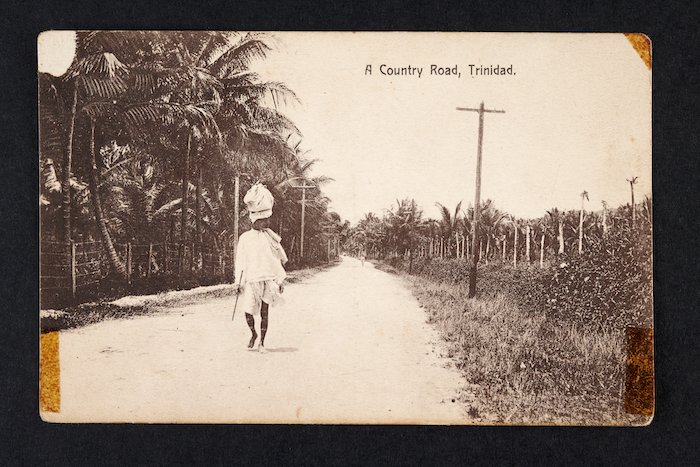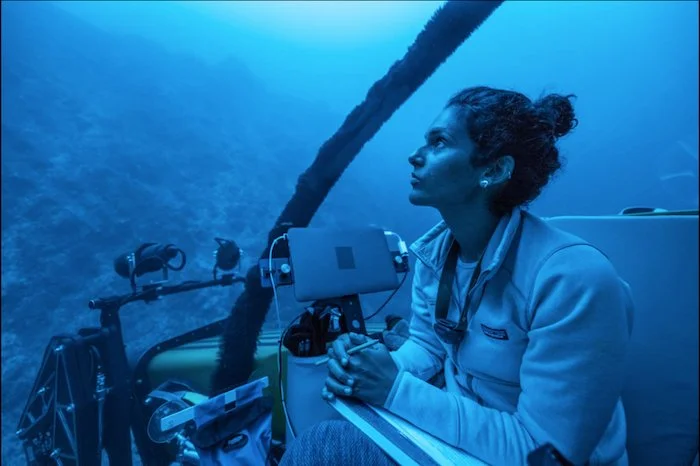British Colonialism: Museum of London Docklands Curates an Exhibit Dedicated to Indo Caribbean Culture
written by Alya Somar
Photo Courtesy of Museum of London©
L-R Zainab (Jane) Gani and Mohamed Ismile (Danny) Gani who emigrated to London from Guyana. Indian indenture ship the Chenab at West India Dock by A.G Linney
written by Alya Somar
May is coined Indian Arrival Month by many countries throughout the Caribbean. Trinidad and Tobago, Saint Lucia, Jamaica and others regard May as the month South Asian labourers first stepped foot in the Caribbean. This May the Museum of London Docklands announced the launch of its new exhibit called “Indo + Caribbean: The Creation of a Culture.” The exhibit highlights the lives and legacies of Indo Caribbeans from the past and present.
According to the museum, Indian indentureship lasted nearly a hundred years in the British colonised West Indies. Indentured labourers were told to expect to work overseas for three to five years in exchange for transportation, minimal wages and basic necessities. After the abolition of slavery in 1833, British plantation owners in the Caribbean recruited workers from India for cheap labour.
[Additional Read: How to Start Your West Indian Family Tree From Abroad]
The exhibit explores “the transition between enslaved African labour and the start of Indian indenture, including letters petitioning the government from planter Sir John Gladstone.” The display’s “Sugar and Slavery” gallery showcases the transition from African enslavement to Indian indentureship and the everyday lives of indentured workers during their tenure. It will also highlight present-day Indo Caribbean culture in London.
According to the museum, between 1838 and 1917, more than 450,000 Indians made the journey to the Caribbean in hopes of a better life. The conditions on board the ships from India to the West Indies were dire. Poor sanitation and provisions created a host of issues for migrants including illness and death. Upon arrival, their hardships continued with hazardous living and working environments.
Today, Indo Caribbeans make up a large ethnic group both in the Caribbean and have migrated across the world. Their distinct subculture has been forged through a history of colonial resistance. Traditional food, music and other cultural aspects originating in India can be found across the Caribbean blended with countless cultures into new art forms.
Shereen Lafhaj, a curator at the Museum of London Dockland said “As we mark the 75th anniversary of Windrush this year, Indo + Caribbean is a chance to learn more about Britain’s colonial footprint and the diverse communities from the Caribbean that have enriched our city. Exploitative and often shockingly cruel, Indian indenture was a system that nonetheless produced a unique culture, where individuals found agency to forge a new life. We hope this will be a starting point for people to find out about this lesser-known aspect of our history.”
Ironically, the museum building is one of the original grade one listed warehouses, built in 1802 to store produce from the West Indies. Artifacts displayed in the exhibit include shipping company records and paperwork from the Parliamentary Archives, as well as personal effects like jewelry and photos from local Indo Caribbeans.
Photo Courtesy of © Museum of London
While colonialism and the effects of slavery and indenture are a stain on West Indian and British history the museum has created a first-of-a-kind collection exploring Indo Caribbean culture through a past and present lens.
“Indo + Caribbean: The creation of a Culture” opened Friday, May 19 and will run until Nov 19, 2023. The Museum of London Docklands is open 7 days a week and offers free admission. Visit their website here.






